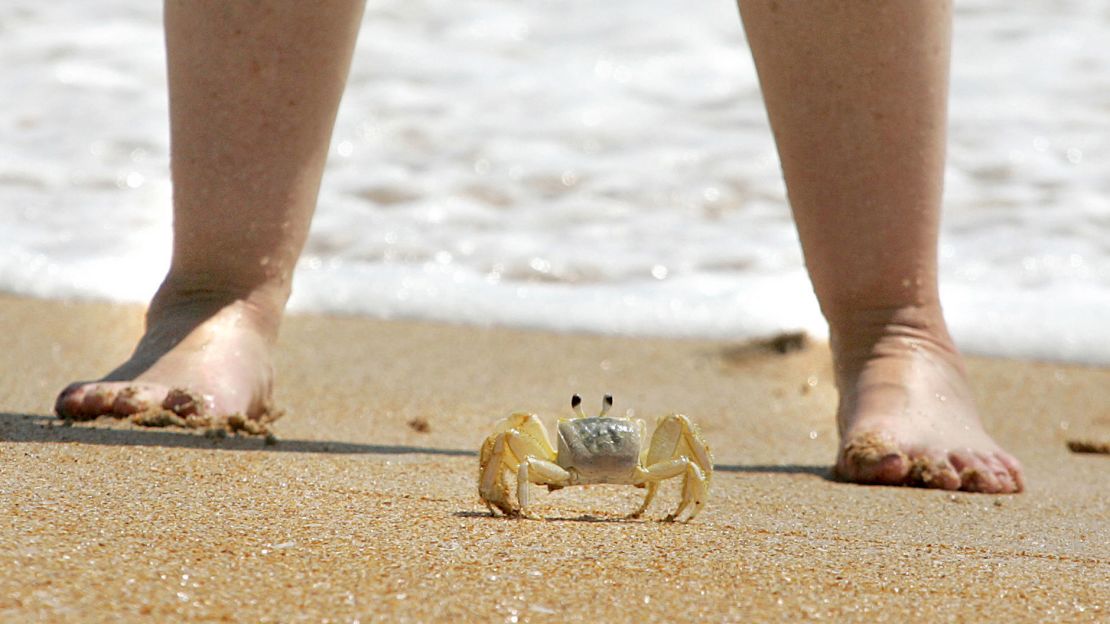You wouldn’t want to encounter an angry crab – but as well as brandishing and snapping their claws, scientists have discovered that crabs can also “growl” in a show of aggression.
Researchers at the Scripps Institution of Oceanography at the University of California studied the ghost crab and found that it could produce a “rasping sound” by “grinding the teeth of the foregut.”
This is the first example of an animal explicitly using their stomach to communicate, according to the researchers.
Many crustaceans have teeth in their stomachs which they use to grind food, but researchers discovered that the ghost crab – ocypode quadrata – was also using it to make noise and communicate.
Ghost crabs, also known as sand crabs, are a species of shore crabs found on the western Atlantic coast from the US to Brazil. Sandy or whitish in color, the crustacean has claws of unequal size, hairy legs and its back can reach 3.75–5 cm (about 1.5–2 inches) in length.
Crabs use many mechanisms to communicate – such as drumming body parts against each other, bubbling fluids and making noises called stridulations by rubbing their claws together.

While studying the ghost crabs, researchers noticed that when they were involved in agonistic interactions, the crustaceans made the aggressive rasping noises even with their claws outstretched.
Biologists aggravated ghost crabs with rods, robotic toys and the bodies of dead and live crabs. Using vibration sensing lasers and X-ray imaging, the researchers discovered that aggressive noises were coming from the crabs’ gastric mill.
“This is exciting because it means that these animals are able to stridulate with both their claws and their guts,” Maya deVries, one of the report’s authors, wrote in an email to CNN. “Because they also use their claws for display and to fight with other crabs, this means that they are able to continue to produce this important stridulation sound, even when their claws are doing something else. It shows just how important this sound is to their behavior.
“Ghost crabs are incredibly well studied, but their ability to produce sound with their guts has remained unknown until now. This structure is pretty ubiquitous in crabs. We think it’s quite possible that communicating with the gut is much more common than is currently known.”
The research was published in The Royal Society journal.


